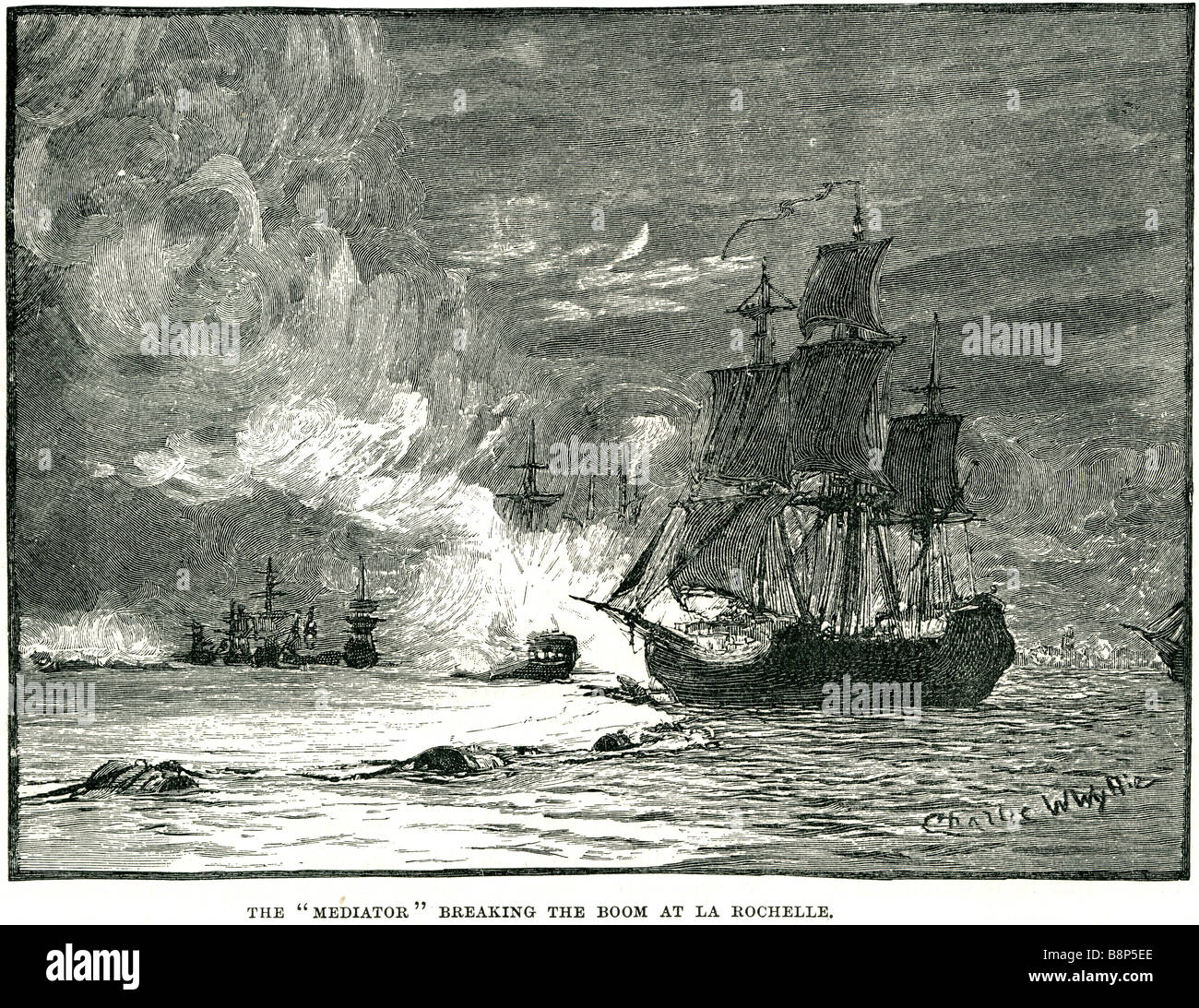mediator breaking the boom la rochelle 1810 French revolution Napoleonic Wars

Image details
Contributor:
19th era / Alamy Stock PhotoImage ID:
B8P5EEFile size:
53.6 MB (7 MB Compressed download)Releases:
Model - no | Property - noDo I need a release?Dimensions:
4926 x 3802 px | 41.7 x 32.2 cm | 16.4 x 12.7 inches | 300dpiMore information:
The city eventually lost its trade and prominence during the decades spanning the Seven Years' War, the French revolution and the Napoleonic Wars. During that period France lost many of the territorial possessions it had in the new World, and also saw a strong decrease in its sea power in the continuing conflicts with Britain, ultimately diminishing the role of such harbours as La Rochelle. La Rochelle is a city in western France and a seaport on the Bay of Biscay, a part of the Atlantic Ocean. It is the capital of the Charente-Maritime department. The city is connected to the Île de Ré by a 2.9 km (1.8 mi) bridge - the longest in France - completed on May 19, 1988. Its harbour opens into a protected strait, the Pertuis d'Antioche. The bedrock of La Rochelle and surrounding areas is composed of layers of limestone dating back to the Sequanian stage (upper Oxfordian stage) of the Jurassic period (circa 160 million years ago), when a large part of France was submerged. These rocks were formed by the accumulation of organisms falling on the seabed, where they solidified. This happened at the time dinosaurs were roaming the earth. Many of these layers are visible in the white cliffs that border the sea, which encapsulate many small marine fossils. Layers of thick white rocks, formed during period of relatively warm seas, alternate with highly friable layers containing sands and remains of mud, formed during colder periods, and with layers containing various corals, that were formed during warmer, tropical times. The limestone thus formed is traditionally used as the main building material throughout the region. The area of La Pointe du Chay, about 5 kilometers from La Rochelle is a popular cliff area for leisurely archaeological surveys.